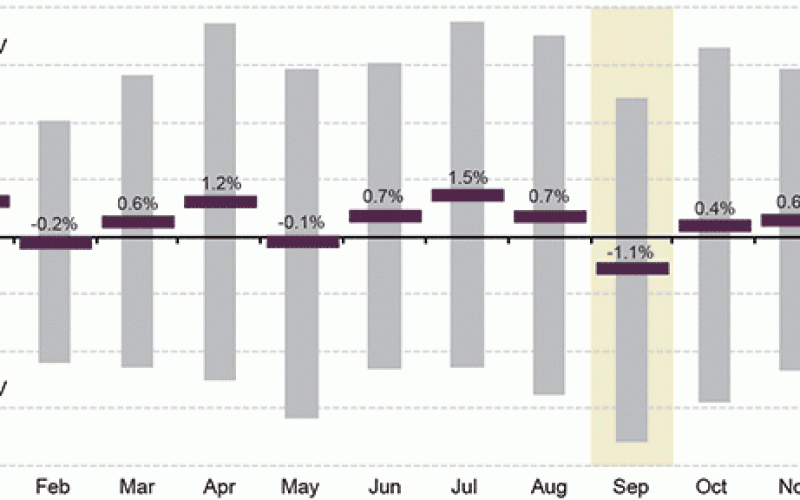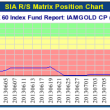The release of the July Federal Open Market Committee meeting minutes today and the Jackson Hole Economic Policy Symposium starting tomorrow are likely to dominate near-term activity in financial markets. Despite mixed economic data, it appears increasingly likely that some form of tapering will be announced at the FOMC’s September meeting.
Global CIO Commentary by Scott Minerd, Guggenheim Partners, LLC
Market participants remain more focused on the possibility of a reduction in the Fed’s asset purchases than on economic data. Recent comments by Federal Reserve presidents, including the particularly dovish Charles Evans of the Chicago Fed, suggest the U.S. Federal Reserve is likely to announce a tapering of quantitative easing after the Federal Open Market Committee’s September 17-18 meeting. Wednesday’s release of the July FOMC meeting minutes and the Fed’s Jackson Hole Economic Policy Symposium, which begins on Thursday, will provide investors clues about the central bank’s upcoming moves. Importantly, there is a growing consensus that some form of tapering is on the way.
Recent economic data is decidedly mixed, and not enough to justify rapid tapering in our opinion. However, since June the Fed has made the markets take their medicine and we see a strengthening in commitment by the Fed to hold to its guidance on the path of the program. Now the internal debate is likely no longer “when” but “how much?” The size of the proposed monthly decrease was originally thought to be $20 billion, but economic headwinds, particularly from the housing sector, make us think that the Fed may settle on a monthly reduction of around half that amount (evenly split between Treasuries and mortgage securities).
Regardless of the amount of tapering and its composition, the bottom line for investors is that financial markets will probably be dominated in the coming month by a great deal more of tapering-related noise. This would be a negative for risk asset prices, and is likely to continue to drown out a number of other fundamental economic and policy-related issues including the full impact of the sequester and Washington’s looming budget and debt ceiling debates.
Chart of the Week
Rising Uncertainty for September
Historically, September is the worst month for U.S. stock market performance. Since 1929, the S&P Composite Index has averaged -1.1 percent for September, making it one of only three months with negative average returns over that time. The worst performing single month over this time period was September 1931, when the S&P composite fell 30 percent. There are several macroeconomic uncertainties facing the United States and the global economy as we head into September. The potential tapering of the U.S. Federal Reserve’s asset purchase program, the budget debate in Washington, and the German election could all increase volatility in global financial markets.
AVERAGE MONTHLY RETURNS OF THE S&P 500 INDEX (1929 – 2012)*

Source: Bloomberg, Guggenheim Investments. Data as of 12/31/2012. *Note: Data reflects average monthly price returns.
Economic Data Releases
U.S. Housing Data Solid Despite Higher Mortgage Rates
- Existing home sales jumped 6.5% in July to an annualized pace of 5.39 million. The gain was much better than the expected 1.4% and brought sales to the highest level since November 2009.
- July housing starts rose 5.9% to an annualized pace of 896,000 with the entire increase in multi-family starts.
- Building permits increased to a rate of 943,000 in July, up 2.7% after falling the previous two months.
- The NAHB housing market index for August continued to make multi-year highs, reaching 59.
- Mortgage applications fell 4.6% for the week ended August 16th, the ninth-week of decreasing applications out of the last 10 weeks.
- Industrial production was largely flat in July as production in the manufacturing sector fell for the first time in three months.
- University of Michigan consumer confidence fell to 80 in August from July’s six-year high.
- Initial jobless claims dropped to 320,000 the week ended August 10th, which was nearly a six-year low.
- The Empire Manufacturing Index unexpectedly fell in August to 8.24.
- The Philadelphia Fed index also declined unexpectedly to 9.3.
- The CPI edged up 0.2% in July, putting the year-over-year number at 2.0%.
Euro Zone Trade Surplus Widens
- The euro zone’s trade surplus widened in June, with exports up 3.0%, the first gain in three-months.
- Consumer prices in the euro zone dropped 0.5% in July to a year-over-year rate of 1.6%.
- U.K. retail sales excluding autos rose for a third straight month, jumping 1.1% in July.
- U.K. house prices fell for the first time this year in August, down 1.8%.
- Japanese exports quickened to a year-over-year growth rate of 12.2% in July, but were outpaced by a surge in imports of 19.6%.
- Japan’s All Industry Activity Index fell 0.6% in June, the first decrease this year.














